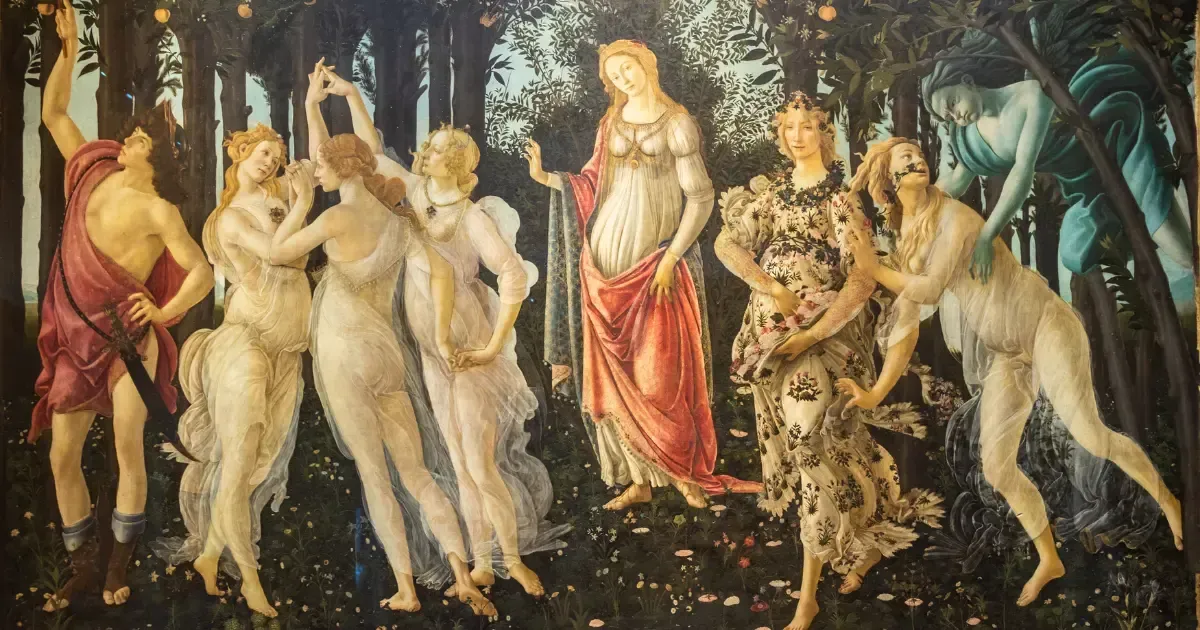
La Primavera (Allegory of Spring) by Botticelli
La Primavera by Botticelli
The celebrated painting, known as the La Primavera or ‘Allegory of Spring’ immerses viewers in a captivating scene where classical mythology and lush symbolism beautifully converge. Crafted by Sandro Botticelli during the late 15th century Italian Renaissance, the Primavera enchants with its portrayal of nine ethereal figures moving gracefully across a verdant landscape adorned with orange and laurel trees.
In the foreground, Zephyrus, the gentle west wind, tenderly embraces the nymph Chloris, initiating her transformation into Flora, the goddess of spring and fertility. Flora, now depicted amidst a profusion of blossoms, embodies renewal and abundance. At the center of the composition, Venus, the goddess of love and beauty, stands modestly dressed and slightly withdrawn from the rest, accompanied by a blindfolded Cupid, whose arrow symbolizes the unpredictable nature of love.
To the left, the Three Graces, representing virtues akin to those of Venus, dance in harmonious circles, adding a dynamic rhythm to the tableau. Mercury, identified by his winged helmet and sandals, completes the scene as he touches a cloud with his staff, bridging the earthly and celestial realms.
While the precise allegorical meanings of the Primavera remain a topic of scholarly debate, the painting undoubtedly celebrates themes of love, peace, and prosperity, reflecting the ideals of Renaissance humanism. Botticelli’s meticulous attention to detail is evident in the botanical accuracy of over 138 species of plants depicted, likely informed by contemporary herbals.
Originally painted on a poplar wood panel, the Primavera once graced the residence on Via Larga (modern-day Via Cavour) belonging to the heirs of Lorenzo di Pierfrancesco de’ Medici, a notable figure in Florentine society. It adorned the space above a lettuccio, a type of chest commonly found in noble Renaissance homes. Later, it was moved to the Villa di Castello, where it was documented by the renowned Renaissance historian Giorgio Vasari alongside Botticelli’s other iconic work, the Birth of Venus.
The Primavera stands not only as a testament to Botticelli’s artistic prowess but also as a celebration of his dedication to his craft. Despite the natural darkening of pigments over time, the vibrant palette is enlivened by the abundance of fruits and flowers, echoing the vitality of the season it represents. Through its enduring beauty, the Primavera continues to captivate and inspire, inviting viewers into a timeless realm where myth and beauty converge in harmonious splendor.
TOP SELLING UFFIZI TICKETS
Here’s your chance to get your Uffizi Gallery Tickets! Simply choose from one of our best selling and most popular Uffizi Tickets.
Also See
